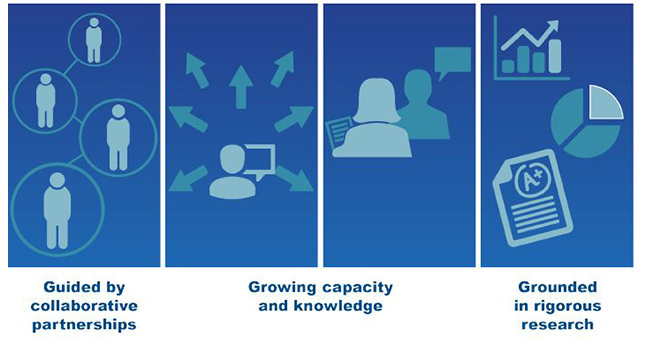With cold and flu season upon us, it can feel like our kids are out of school more than they are in school. Illnesses are disruptive to their routines; they miss their friends; and, most importantly, they miss opportunities to learn. Health-related absences were a common occurrence before the COVID-19 pandemic hit. Now, after experiencing a global health crisis, kids are more likely to be kept or sent home if they’re showing signs of infectious illness even if they feel well enough to engage in school activities. This extra caution may help reduce the spread of disease, but it also increases the likelihood that students may end up chronically absent.
Chronic absenteeism is generally defined as missing 10 percent or more of days in a school year (excused or unexcused). It’s an issue our REL has studied before and was recently elevated by the U.S. Department of Education (ED) when it named increasing attendance as one of the top three strategies that states, districts, and schools can take to accelerate academic performance.
ED found that the nationwide rate of chronic absenteeism reached about 31 percent in 2021/22—that’s about 15 million students who missed a significant amount of school and double what the rate was pre-pandemic. These increases are widespread and affect districts across all achievement levels, district sizes, poverty levels, urbanicity levels, and more. Even the districts that held classes mostly in person during the height of the pandemic experienced significant increases in absenteeism rates the following year.
Missed school means missed opportunities to learn. Chronic absenteeism can account for up to 27 percent of the post-pandemic test score declines in math and up to 45 percent of the test score declines in reading. There are also social-emotional consequences and long-term impacts associated with chronic absenteeism. Addressing chronic absenteeism involves understanding the root causes of students’ absences and implementing diverse strategies at all levels (state, district, and school) to support their attendance and overall well-being.
Chronic conditions and contagious illnesses are among the most common reasons for absences.
Absenteeism has been a longstanding concern for students with chronic illness. Asthma, for example, is a leading cause of health-related school absences, and it can be aggravated for students attending schools with poorly ventilated classrooms. Asthma was also the most prevalent health condition among students in a study we conducted with the District of Columbia Public Schools. When a school is aware of students’ chronic health conditions, it can work with those students, their teachers, and their families to coordinate needed services and create healthy learning environments—at home as well as at school.
Potentially contagious illnesses (including COVID-19, which remains a threat) raise different issues because sending a contagious kid to school poses risks to teachers and other students. Health policies and how strictly they’re implemented vary widely from one school district to the next. Recently, Attendance Works put out recommended health guidance that encourages families to send kids to school unless they’re too sick to participate. But doing so is a judgment call for caregivers—and it is likely that the pandemic experience will make many schools cautious for the indefinite future about allowing sick students in the classroom even when their caregivers have sent them.
Continue reading on the REL Mid-Atlantic blog to learn how we propose using remote instructional tools to help students maintain learning momentum while stuck at home due to illness or adherence to school policies.




